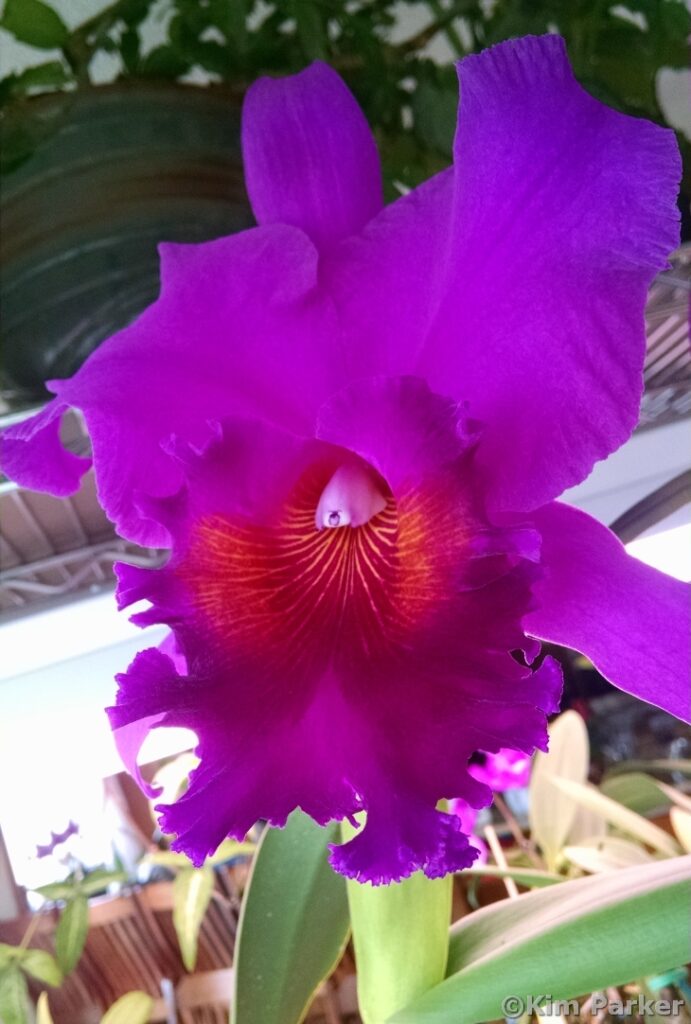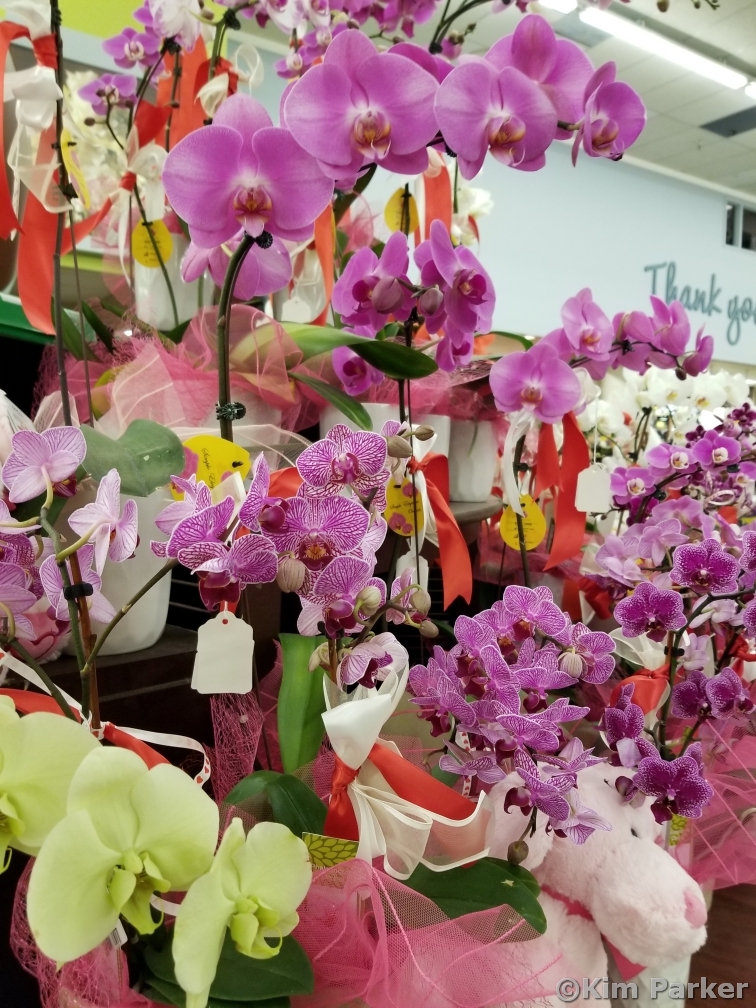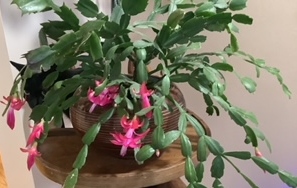— Author: Kim Parker, Laramie County Advanced Master Gardener

On Valentine’s Day, think about giving a live plant with long-lasting blooms instead of cut flowers! Orchids are the second most popular flower and represent love, beauty, and refinement. They come in a dizzying array of colors and sizes. Orchids do well in our homes or offices and the flowers can last for several weeks or even months! Here are some easy tips to keep your orchids alive and reblooming for many years to come!
Bring home a healthy plant!
The best thing you can do to ensure a long-lived orchid is to bring home a healthy plant. Do the orchids all look healthy, or are there a lot of sick and dying ones in the display? For a healthy plant, look for:
- Leaves that are firm and plump and not wilted, wrinkly, or floppy. Avoid plants with missing or broken leaves or leaves with brown or black spots.
- Roots that are firm and plump – bright white or silvery if dry and grass green if wet. Growing tips will be pointy and grass green or slightly purple and are a sign of a healthy plant.
- The flowers closest to the plant will open first and should be open all the way, not wilting, falling off, or missing. Purchase an orchid with at least 3 unopened buds on the end of the flower spike, so that you know it will continue to bloom for a long time.
- Bugs are good at hiding, so if you see some with just a glance, go to a different store! Look into the leaf crevices for any crawling insects like scale, mealy bugs (white cottony bugs), thrips, or aphids. We’ll talk more about those in another blog! Fungus gnats are not serious pests and can be controlled by watering correctly.

Water only when they need it!
Orchids are tropical plants and should never be “watered” with ice cubes! Most orchids are epiphytes, which means they do not grow in soil, but on tree branches or rocks, allowing their roots to drain completely. Water your orchids when the medium begins to dry, about every 3 to 7 days. Hold under tepid water for 30 seconds and let drain completely. Remove from the decorative pot before watering if there are no drainage holes. The fastest way to kill your orchid is to allow the roots to sit in water!
Find the right light!
Orchids are particular about how much light they need. Most grow well in bright, indirect light, or under fluorescent lights like African violets or Christmas cactus. Avoid direct sun from south or west windows. If the tag does not tell you how much light they need, check out the American Orchid Society culture sheet for your type of orchid.
Stay tuned for our next orchid article (coming May 2024) covering the most popular, widely-available orchid! Phalaenopsis, or “Moth” orchids, have big, beautiful flowers that last up to 6 months! For a bonus, they are the easiest to grow, too!


